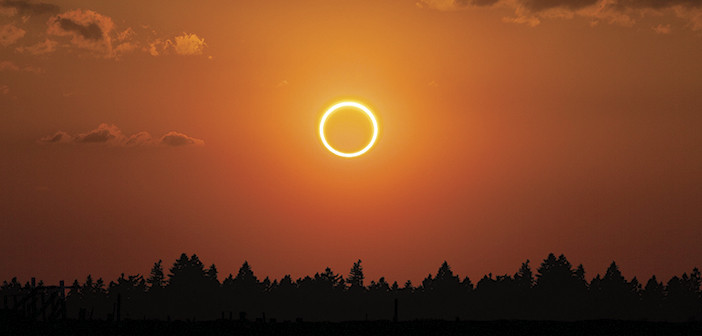By Collin Brooks
A rare spectacle will grace the local sky on August 21, the first time in 99 years, a total solar eclipse will cross the entire continental United States. While the Tri-Cities will only see 97 percent of the solar eclipse, the area of totality — which is something that astrologers drool over — isn’t a far drive.
Dr. Gary Henson, an associate professor of astronomy at East Tennessee State University, said our proximity to the solar eclipses’ path is very rare.
“It is nice for us that the areas of the path of totality parallel parts of Interstate 40, Interstate 26, Interstate 85 and Interstate 75, so we are fortunate that we can get to the path easily,” Henson said. “But they are predicting millions of people will be trying to get to that path…so it could get pretty crowded.”
He cautioned that if you plan on going to a location, it’s best to leave early. He, for example, will be waking up early on the morning of Aug. 21, looking at the weather forecast and venturing to the place that he feels will be best.
Henson said that a given location in the totality radius will go dark for about two-and-a-half minutes during the moon’s maximum coverage, while the Tri-Cities will experience over a minute.
“It will be almost like flipping a light switch, it will be so dark,” said Henson, who also noted that the temperatures could drop as much as 25 degrees in some locations. Spectators in the area of totality will be able to see Venus, due to the darkness. Spectators expect to see stars come out and will also see a rare sight of the sun’s corona.
Parts of Southeast and Middle Tennessee — including Nashville — along with parts of South Carolina are in the area of totality. If you happen to be in those parts, Henson said that you won’t have to do anything special to experience the eclipse.
“If you’re in that path then you don’t have to be anyplace special,” Henson said. “You can be in the middle of the city, out in the county, it doesn’t matter. All you have to do is look up at the sky.”
During the solar eclipse, the moon will cut off the sunlight from the largest star in our solar system and create a black out effect that will be witnessed through a path that spans 60-miles. The eclipse is expected to move through the area around 2:30 p.m.
It’s an experience that Henson said he has never been able to see for himself.
“I’ve never been able to see one myself, in all my decades as an astronomer, but people that have and that go off to these around the world, they’ve all just come back and said that there is nothing you’ll ever experience that compares to the eclipse first hand,” Henson said. “It’s a unique and rare event for a given location, so for an individual who doesn’t have the ability to travel around the world, it really is a once-in-a-lifetime event to see.”
There’s a total solar eclipse somewhere in the world roughly every 18
months, but the path only averages 70-100 miles wide, which makes it extremely rare to cross the United States. The next solar eclipse will be in 2024 but its path won’t be close to the Tri-Cities, Henson said.
However, even as beautiful as the sight is to see, the light from the sun can damage your eyes.
“Even the tiniest sliver of direct sunlight has too much intensity of light that it can damage the eyes if you directly look at it for any length of time,” Henson said. “Until the sun is totally blocked, it’s never safe to look at the eclipse, without eye protection.”
But normal sunglasses won’t be enough. People interested in looking at the eclipse should purchase special safety glasses, that can be purchased online for around $2.
Astronomers from ETSU don’t have anything special planned at the university, but that is mainly because many of the experts will be driving to the area of totality.
“It’s a once in a lifetime event, even for some of us,” he said. “So we are going to make that effort to drive two to three hours to view it.”
He mentioned that Clemson and Furman are having special events, which include filling Furman’s football stadium with viewers.






